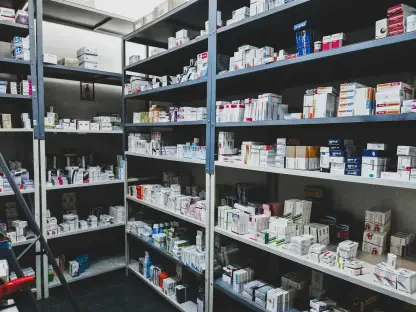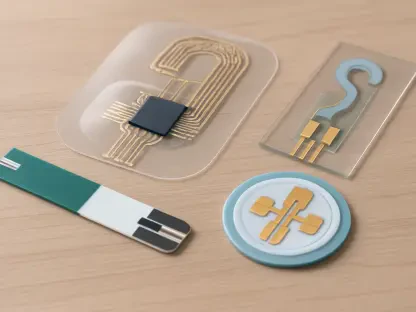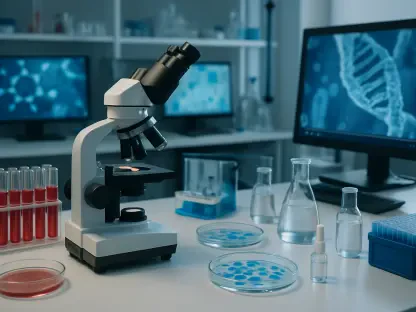Healthcare’s relentless pursuit of safer, more efficient disinfection methods has recently seen a game-changing development with the introduction and validation of chlorine dioxide foam as an innovative high-level disinfectant. Recognized by the Association for the Advancement of Medical Instrumentation (AAMI) and the American National Standards Institute (ANSI), this new standard marks a significant shift from traditional methods that predominantly recommended rinsing with water. The updated guidelines, compiled by AAMI and formally adopted by ANSI, acknowledge chlorine dioxide foam for the high-level disinfection of medical devices and replace the existing ANSI/AAMI ST58:2024 standard. This development introduces new recommendations for FDA-cleared liquid chemical sterilants, high-level disinfectants, and gaseous chemical sterilizers, providing much-needed guidance for healthcare professionals across various settings such as hospitals, clinics, and laboratories.
A Shift in Disinfection Protocols
The revised standards now allow for manufacturer-defined residue removal steps, significantly deviating from the previously endorsed water rinsing process. This offers a potentially more efficient alternative, enhancing the overall disinfection process. The World Federation for Ultrasound in Medicine and Biology’s 2024 guidelines also align with these new standards, incorporating chlorine dioxide into their disinfection protocols for ultrasound probes. Tristel ULT, a groundbreaking formulation utilizing chlorine dioxide foam and wipes for high-level disinfection and residue removal, received FDA De Novo clearance in June 2023. This significant milestone not only validated the efficacy of chlorine dioxide foam but also established a new category of Class II devices under the generic name ‘foam or gel chemical sterilant/high-level disinfectant.’
The adoption of chlorine dioxide foam marks an essential evolution in disinfection practices, responding to the growing demand for reliable methods to combat healthcare-associated infections. Chlorine dioxide foam’s proven efficacy against a broad spectrum of pathogens, including bacteria, fungi, mycobacteria, and viruses, as well as its sporicidal activity, positions it as a superior solution for high-level disinfection in healthcare settings. This innovation represents a vital step forward toward ensuring patient safety and achieving compliance with best practices in sterilization and disinfection.
New Guidelines Revolutionize Patient Safety
The inclusion of chlorine dioxide foam in the updated standards aims to significantly enhance patient safety by offering a more efficient disinfection process compared to traditional methods. The traditional reliance on exhaustive water rinsing had limitations, leading to potential residues that could compromise patient outcomes. The new guidelines, however, allow for more flexible, manufacturer-defined residue removal processes, which are expected to boost disinfection efficiency and effectiveness. As these guidelines gain traction and are widely implemented, the risk of healthcare-associated infections is anticipated to decrease, ensuring a safer environment for both patients and healthcare providers.
The World Federation for Ultrasound in Medicine and Biology’s endorsement of chlorine dioxide in their protocols underscores the global recognition of its benefits. This aligns international disinfection standards and validates its extensive application range. Notably, Tristel ULT’s chlorinated dioxide foam has been meticulously tested and proven effective; its launch within the US market represents a significant breakthrough in accessible high-level disinfectants. The foam’s establishment within FDA standards as a Class II device further emphasizes its importance and credibility within the healthcare industry.
Looking Ahead: Promising Future for Disinfection Technologies
The new standards now permit manufacturer-defined residue removal steps, a notable shift from the previous reliance on water rinsing. This change offers potentially greater efficiency, enhancing the overall disinfection process. The World Federation for Ultrasound in Medicine and Biology’s 2024 guidelines reflect these standards by incorporating chlorine dioxide into ultrasound probe disinfection protocols. Tristel ULT, an innovative product using chlorine dioxide foam and wipes for high-level disinfection and residue removal, gained FDA De Novo clearance in June 2023. This milestone not only validated the effectiveness of chlorine dioxide foam but also established a new category of Class II devices known as ‘foam or gel chemical sterilant/high-level disinfectant.’
The use of chlorine dioxide foam represents a significant leap in disinfection practices, meeting the increasing need for reliable methods to combat healthcare-associated infections. Its proven effectiveness against a wide range of pathogens, including bacteria, fungi, mycobacteria, viruses, and spores, makes it an excellent choice for high-level disinfection in healthcare settings. This advancement is crucial for ensuring patient safety and adhering to best practices in sterilization and disinfection.









